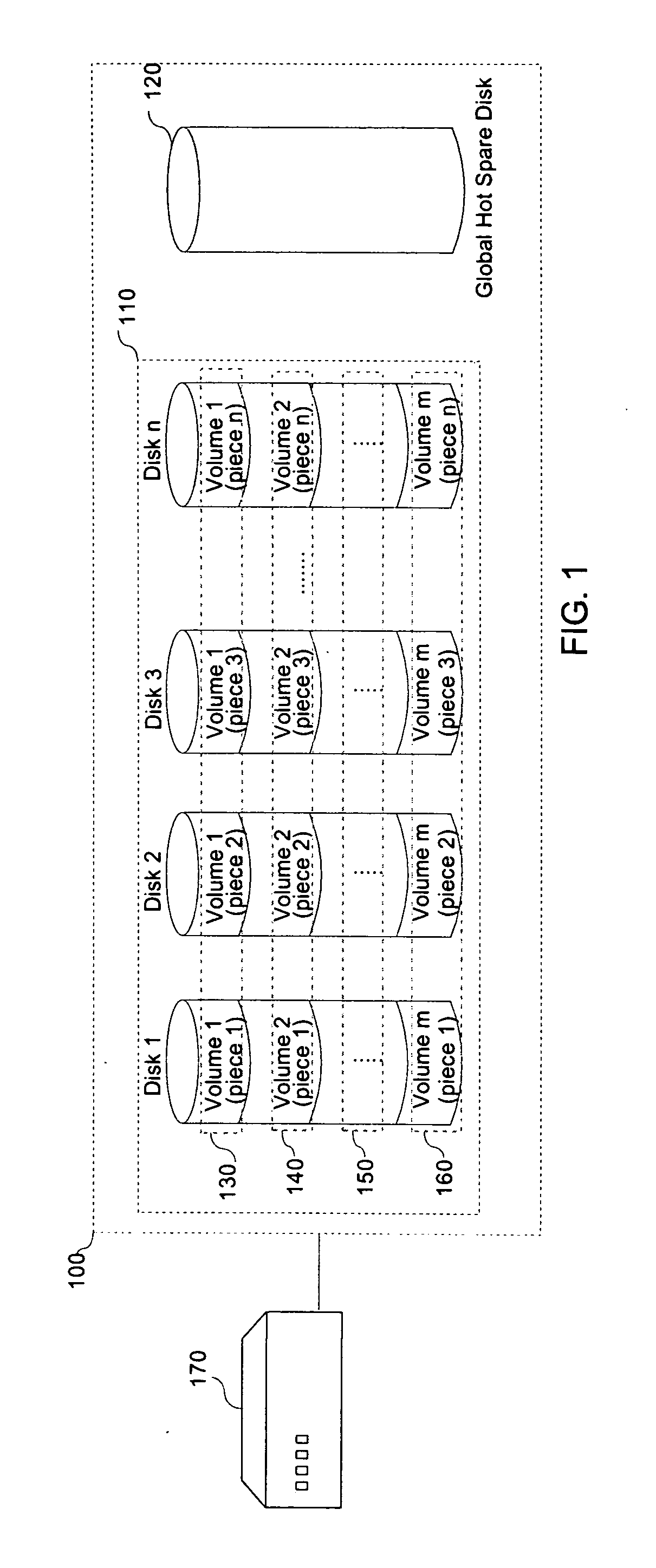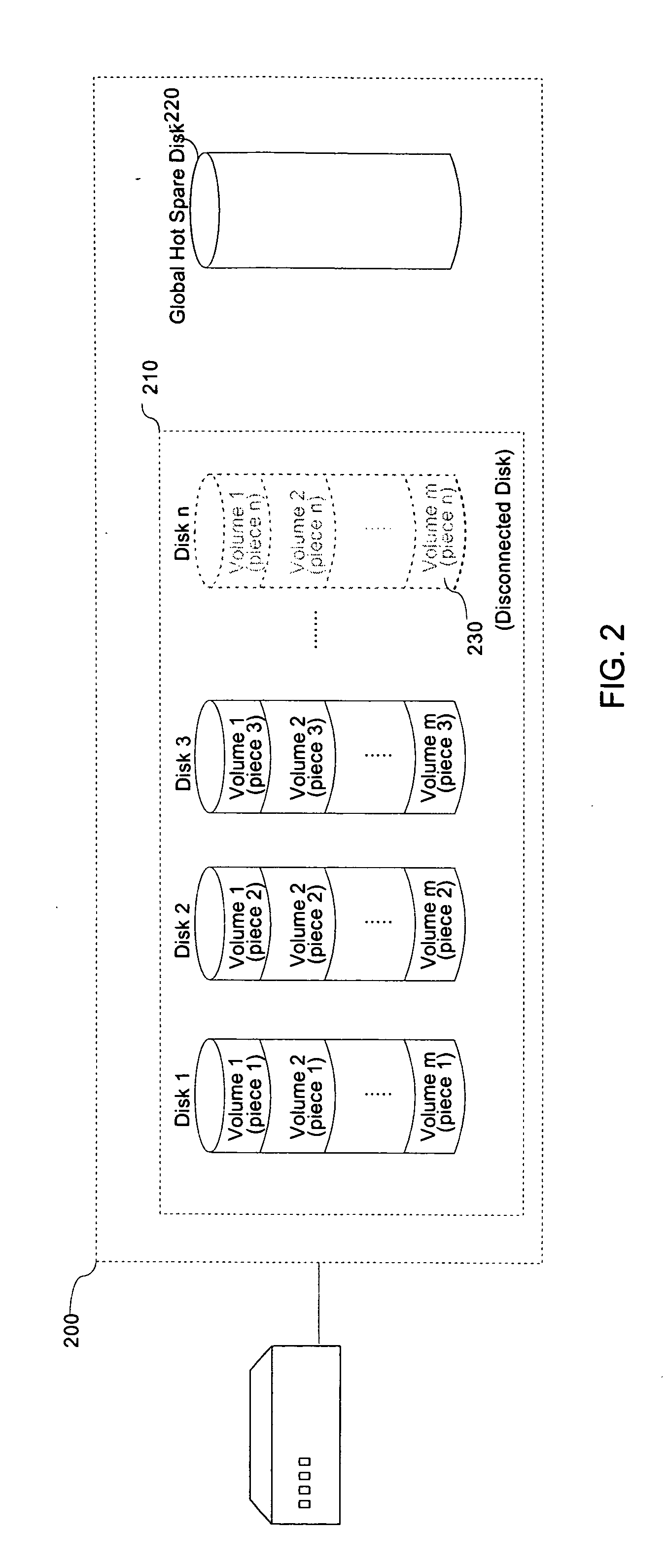Optimized reconstruction and copyback methodology for a failed drive in the presence of a global hot spare disc
- Summary
- Abstract
- Description
- Claims
- Application Information
AI Technical Summary
Benefits of technology
Problems solved by technology
Method used
Image
Examples
Embodiment Construction
[0022]Reference will now be made in detail to the presently preferred embodiments of the invention.
[0023]Should a component disk of a RAID system fail, a global hot spare disk will incorporate for the missing drive. Following the disk failure, when a processing unit makes an I / O request to one or more volumes in the RAID, the volumes which have individual volume “pieces” located on that disk transition into a “degraded” state. When one or more volumes become degraded, the system initiates a reconstruction of the degraded-volume pieces on the failed disk to the global hot spare disk so as to maintain the consistency of the data. This reconstruction is achieved by use of the data and parity information maintained on the remaining drives. Following reconstruction of any degraded volumes, the global hot spare disk operates as a component drive in the RAID in place of the failed disk with respect to the degraded volumes. Once a replacement disk for the failed disk is inserted back into t...
PUM
 Login to View More
Login to View More Abstract
Description
Claims
Application Information
 Login to View More
Login to View More - R&D
- Intellectual Property
- Life Sciences
- Materials
- Tech Scout
- Unparalleled Data Quality
- Higher Quality Content
- 60% Fewer Hallucinations
Browse by: Latest US Patents, China's latest patents, Technical Efficacy Thesaurus, Application Domain, Technology Topic, Popular Technical Reports.
© 2025 PatSnap. All rights reserved.Legal|Privacy policy|Modern Slavery Act Transparency Statement|Sitemap|About US| Contact US: help@patsnap.com



